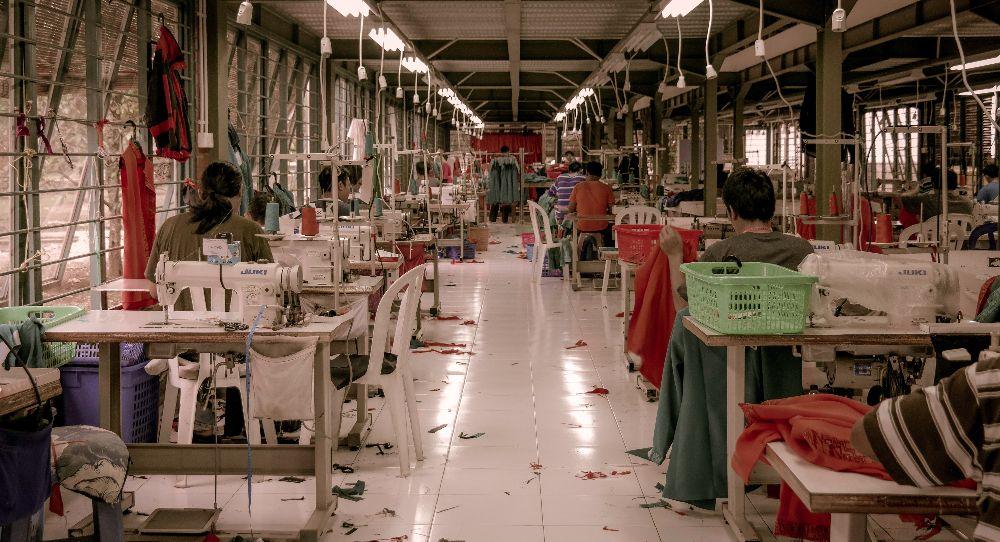Break the cycle of buying, using and throwing away. Discover how much the textile industry and Chilangos projects that work to solve the problem of excessive consumption contaminate.
The 9 million inhabitants of Mexico City have something in common: daily we face the decision of what to wear. Whichever garment you choose, they all have a significant environmental impact. Today, the fashion industry is considered one of the most polluting in the world, responsible for 10 percent of global carbon emissions, according to estimates by the World Economic Forum.
Becoming conscious of the clothes you wear might not be something you had in mind to help the planet. Maybe you thought that using the car less was enough, not asking for a straw and turning off the light you don't use. However, the fashion problem is a bit more complex.
It may interest you: Will you remodel your closet? Apps to sell/donate your clothes
How much the textile industry pollutes
In the last 15 years, the world's clothing production has doubled (according to the Ellen McArthur Foundation) and, at the same time, its quality and cost have decreased. price.
Cynthia Gómez, an academic at the Universidad Iberoamericana, comments: “everything arose from generating a system of mass production of trendy garments at affordable prices. This system was so successful that the quality of textiles and clothing was sacrificed to quickly have a cheap product on the sales floor. This generated what we are experiencing now: a disposable and polluting fashion”.
Today we consider it a great achievement to find a fashionable and low-cost garment. But behind that sale price are hidden malpractices in the industry, which have a negative impact on both the environment and the people who make our clothes.
We recommendWill you remodel your closet? Apps to sell/donate your clothes
“To measure how much the textile industry pollutes: around 8 million tons of plastic enter the oceans annually. Of that amount, 35 percent are microfibers derived from textiles, many of them generated during the wash cycle," says Christian Stefanoni, Head of Communications at Fashion Revolution, a British non-governmental organization based in Mexico that seeks to raise awareness. about the current problem of fashion.

“But the problem – he adds – does not end there: a study by the World Wide Fund for Nature revealed that an average person consumes five grams of plastic a week, the equivalent of a credit card”.
Maybe this wouldn't be a problem if our clothes were biodegradable, that you could throw them away and they would be gone in a matter of months. But most of the clothes we wear today are made of synthetic materials, such as polyester or nylon.
Check the label of what you are wearing: it is very likely that it has some percentage of polyester, a material derived from petroleum and that takes hundreds of years to degrade. On the other hand, although cotton is almost always perceived as the good guy, producing a T-shirt from this natural fiber consumes 2,700 liters of water and generates as many carbon emissions as driving a car for just over 55 kilometers, according to Oxfam estimates.
It may interest you: Naturally Mexican fashion
Once upon a time in Mexico
For a long time, Mexico was a textile force and a market that consumed garments made with national inputs and labor. Later, we facilitated the entry of foreign products, many of them of lower quality, which made us fall in love with their low costs.
Although you may not consider yourself very fashionable, in our country we are avid consumers of clothing. In 2019, the consultant Kantar Worldpanel revealed that 67 percent of Mexicans made at least one clothing purchase in the first six months of the year, and it is estimated that in the first half of 2021 we will make four purchases with a value of $429 each.
We recommendNaturally Mexican fashion
Not only that: in addition to buying a lot of clothes, we generate a significant amount of textile waste. According to Semarnat, only in CDMX we discard 3.7 billion tons of textile waste per year, especially bedding, curtains and underwear, and only one percent of that amount is recycled.
In addition, “there is very little information and research on the problems that the fashion industry generates at the national level,” says Stefanoni. It is of such magnitude that Mexico is the second country in which Fashion Revolution is creating a tool that facilitates transparency”.
The problem is not only the level of consumption, nor which brands to buy and which not: the problem in Mexico is centered on purchasing power. “The Mexican portfolio does not allow us to consume high-end pieces. Many times the price of one of these garments is the total clothing budget for a year. That is why second-hand garments have become so popular, not only in recent years”, adds Cynthia Gómez.
It may interest you: Blessed, vintage fashion and responsible consumption in times of pandemic
Whose turn is it to change?
If how much the textile industry pollutes is a problem that involves consumers and brands, whose transformation is really in whose hands?
“Each of us can contribute to making fashion more sustainable by making changes to our lifestyles, especially by investing in the longevity of clothing,” says Christian Stefanoni.
We recommendBendita: vintage fashion and conscious consumption in times of pandemic
In fact, doubling the number of times you wear a garment reduces its carbon footprint by 44 percent, according to data from the Foundation Ellen McCarthur. It is not that complicated: the more you use the clothes you already have, the less need there will be to buy something new and the less demand there will be in the production of new clothes.
Questioning consumption and evaluating our role as consumers is a great starting point to solve this problem. “The problem is generated –Gómez observes– by consumption, since the industry responds to the market. We as consumers are responsible, and if we generate a change, companies are going to have to change”.
Thus, part of the initiatives of movements like Fashion Revolution have to do with asking brands who made your clothes, and thus promoting transparency in their processes.
We recommendHandmade fashion
“No one is oblivious to fashion –clarifies the NGO representative–; it is interconnected with everything: our culture, our economy, our environment, and our perception of ourselves.” As with all major changes, the participation of individuals, individuals, and governments that generate public policies is needed to regulate the practices of the above.
A great example of this are the regulations that came into force this year in Mexico City on the prohibition of disposables, since they catalyze changes in individual habits: if they are not going to give you a Styrofoam plate, you take a container.
It may interest you: Handmade fashion
Now that you know how much the textile industry pollutes, give new life to your clothes!
It is important to be aware that many of these alternatives have an environmental and social footprint. The best way to reduce the environmental impact of fashion is to consume less and in a more responsible way.


